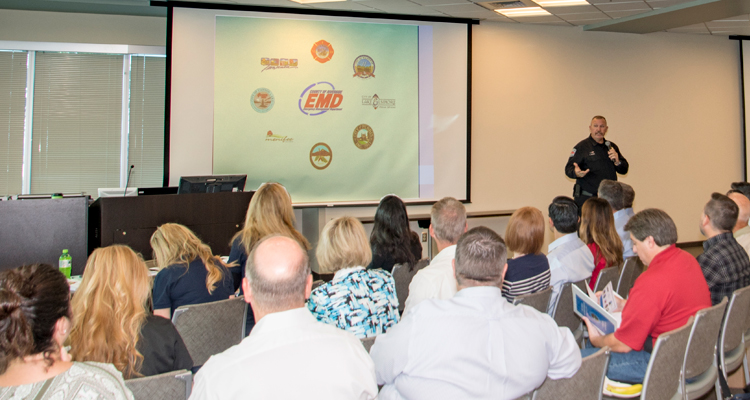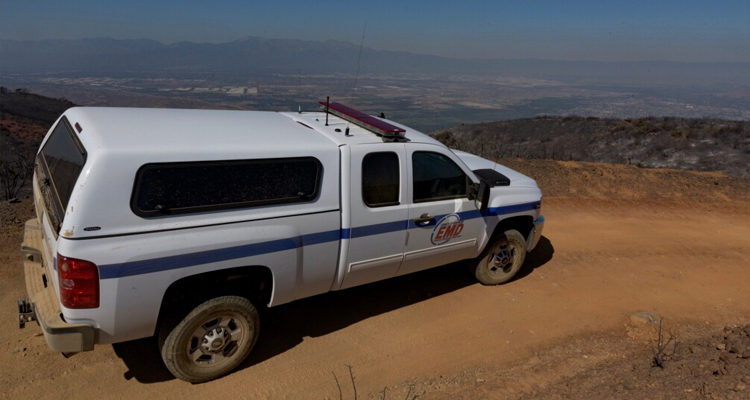EMD has four divisions that combine traditional emergency management, public health disaster management and emergency medical services into a single, comprehensive, all hazards department. We're not just new in Riverside County. We're first of its kind in the industry of emergency management.
Administration, Business and Finance Division
Administration manages, drives and leads the department forward with strategic planning and policy making. The Business and Finance Unit maintains our sound business functions and prudent financial management by closely monitoring 17 different grant allocations from the state and federal government, as well as department spending.
Emergency Planning
The Emergency Planning Division develops and maintains the Emergency Operations Plan and more than 19 separate annexes. In addition, Preparedness conducts exercises and training sessions, as well as manages a dynamic volunteer program.
Emergency Operations
The Emergency Operations Division ensures the ability to respond to and support all-risk events regardless of size. Through building and sustaining Emergency Operations Centers, maintaining a network of field responders, and engaging partner organizations, Operations creates a constant state of readiness.
Riverside County Emergency Medical Services Agency
The Riverside County Emergency Medical Services Agency (REMSA) regulates, supports, monitors and manages both emergency and non-emergency response of the pre-hospital care within Riverside County. For more information on REMSA, click here.
Mitigation
EMD's slogan - RivCo Ready - embodies the purpose and result of mitigation, which is a more resilient community. Mitigation involves actions to protect life and property by reducing the impacts or consequences of disasters.
The time for mitigation is now, before the next disaster. Riverside County is prone to many hazards that can happen at any time. If you want to read about the specific hazards identified in your community and mitigation projects, read the Riverside County Local Hazard Mitigation Plan
Riverside County public safety and response agencies regularly analyze risks in the community, prioritize projects to reduce risks, and in some cases insure against those risks. As such, we invest in long-term community well-being, however, it is imperative that all local agencies and community members also take steps towards mitigation.

Flooding is the most commonly occurring disaster in Riverside County. The National Flood Insurance Program is federally backed flood insurance that decreases the risk and effects of flooding on private and public buildings. For more information, visit the NFIP website.

Preparedness
Preparedness is the second phase of emergency management and involves a persistent drive towards achieving a constant state of readiness among EMD, our public safety partners and other response agencies.
The preparedness phase focuses on the collaborative development of plans designed to share resources and information during any emergency or disaster. In addition, the preparedness phase involves appropriate training, equipment procurement, and exercises. Exercises and real-world responses establishes a plan evaluation period, resulting in lessons learned and corrective actions.
Response
EMD's role in response operations is focused on sharing critical resources and information. We support first responders in the field with alert and warning as well as mass care and shelter capabilities. For larger emergencies and disasters, EMD activates the County of Riverside Emergency Operations Center to build situational awareness and a common operating picture, in addition to leveraging resources - from personnel, equipment and plans - from throughout our Operational Area stakeholders.


Recovery
Recovery from a disaster can take weeks, months, or even years depending upon the size and severity of the incident. After the disaster is no longer threatening the community, the recovery phase starts. Recovery may include setting up local assistance centers for impacted residents and businesses, clearing debris from public roadways, reestablishing utility connections, and financially documenting all activities that may become eligible for reimbursement from the state and federal governments.

